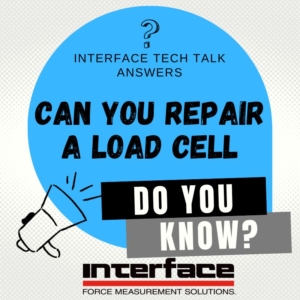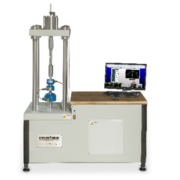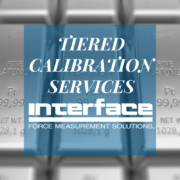Can Load Cells Be Repaired?
 Load cells are very resilient. Most are constructed with sturdy materials that can withstand long and arduous cycling and multitudes of testing projects. In fact, with proper treatment, regular calibration services and use within specifications, load cells can last many years. Even with such high quality and durability, it is important to perform regular diagnostic checks of a load cell to maintain the health of any force measurement device.
Load cells are very resilient. Most are constructed with sturdy materials that can withstand long and arduous cycling and multitudes of testing projects. In fact, with proper treatment, regular calibration services and use within specifications, load cells can last many years. Even with such high quality and durability, it is important to perform regular diagnostic checks of a load cell to maintain the health of any force measurement device.
FACT: Interface has load cells that are in use today that we manufactured several decades ago. As the saying goes, Interface load cells are built to last.
A load cell can be damaged or lose accuracy. Load cells can be repaired depending on the extent of damage. Some common issues such as cable damage, electrical faults, or environmental factors can be repaired by replacing parts or recalibrating the load cell. However, more severe damage such as physical damage to the load cell itself may make it beyond repair and require replacement.
What is the most common type of damage to a load cell?
Most often, a load cell is damaged by overloading or exceeding its rated capacity. This can result in physical deformation or strain on the load cell, leading to permanent damage and reduced accuracy.
Other common causes of damage to load cells include exposure to harsh environmental conditions such as extreme temperatures, moisture, or corrosive substances, as well as electrical faults such as voltage spikes or short circuits. Additionally, mechanical stress from improper installation or handling can also cause damage to load cells.
What steps should be taken to evaluate a load cell that might be damaged?
- Visual Inspection: Ensure that the physical installation, correct interconnection of components and the system are all intact. For example, has the load cell been dropped or have any damage to connectors or adapters? Reference the installation and operation manuals available with each product.
- Electrical Testing: Use an Ohmmeter to check the bridge circuitry and zero balance. Evaluate the resistance and output of the load cell. If there is a notable change in resistance or output, it may indicate that the load cell is damaged. This is also a good time to check the troubleshooting guide.
- Test Loads: Apply a range of test loads to the load cell and observe if the readings are consistent and within the expected range.
- Calibration: If the load cell is not functioning correctly, recalibrate it using a weight calibration system or load cell calibrator to see if the readings are within the expected range.
- Professional Evaluation: Request a thorough inspection of the device to determine the load cell can be repaired or needs to be replaced.
It is important to follow safety protocols and to use proper equipment and techniques when evaluating a load cell to avoid causing additional damage.
After a thorough physical inspection along with mechanical and electrical installation checks, it is determined that a load cell is not performing to specifications it is time to contact the manufacturer for Services & Repair to schedule a return of the product for further evaluation and potential load cell repair.
Use Cases for Frequent Calibration Services and Repair Evaluations
- Harsh environmental conditions can cause corrosion and electrical failures
- Loading forces that exceed the load cell rated capacity can cause shifting of the zero-load output of the load cell
- Moment loading of the load cell can cause zero shifts and other undesirable behavior
- High cycle rates or fatigue applications can cause premature failure
Many of these symptoms can be repaired or mitigated if they are identified early during appropriate evaluation and calibration cycles. In addition, load cells are prone to losing accuracy through normal wear and tear and ageing. There are times when loading conditions and use case environments necessitate the need for more frequent evaluation and calibration cycles. The process of calibration can include adjusting the measuring instrument to bring it in alignment with the standard specifications.
It is always recommended that users consult an application engineer or user’s manual to avoid situations where a load cell can be damaged or degrade accuracy too quickly. Interface has deeps expertise in repair and calibration, built and proven over 55 years in the business of making and calibrating load cells.
Interface provides repair evaluation and services on load cells we make and from other manufacturers. Repairs include a complete evaluation of the device prior to repair and calibration upon completion. Our standards for calibration are world-class. Our calibration labs are managed by experts in diagnostics, testing and repair with engineering and metrology grade equipment designed by the leaders in force measurement.
If you’re already a load cell user and have not had your products calibrated in some time, we recommend scheduling your calibration service online here. Load cells can provide years and years of quality data as long as they are properly taken care of. Put your trust In Interface to make that happen.
Additional Resources
Mechanical Installation Load Cell Troubleshooting 101
Regular Calibration Service Maintains Load Cell Accuracy
System Level Calibration Validates Accuracy and Performance








